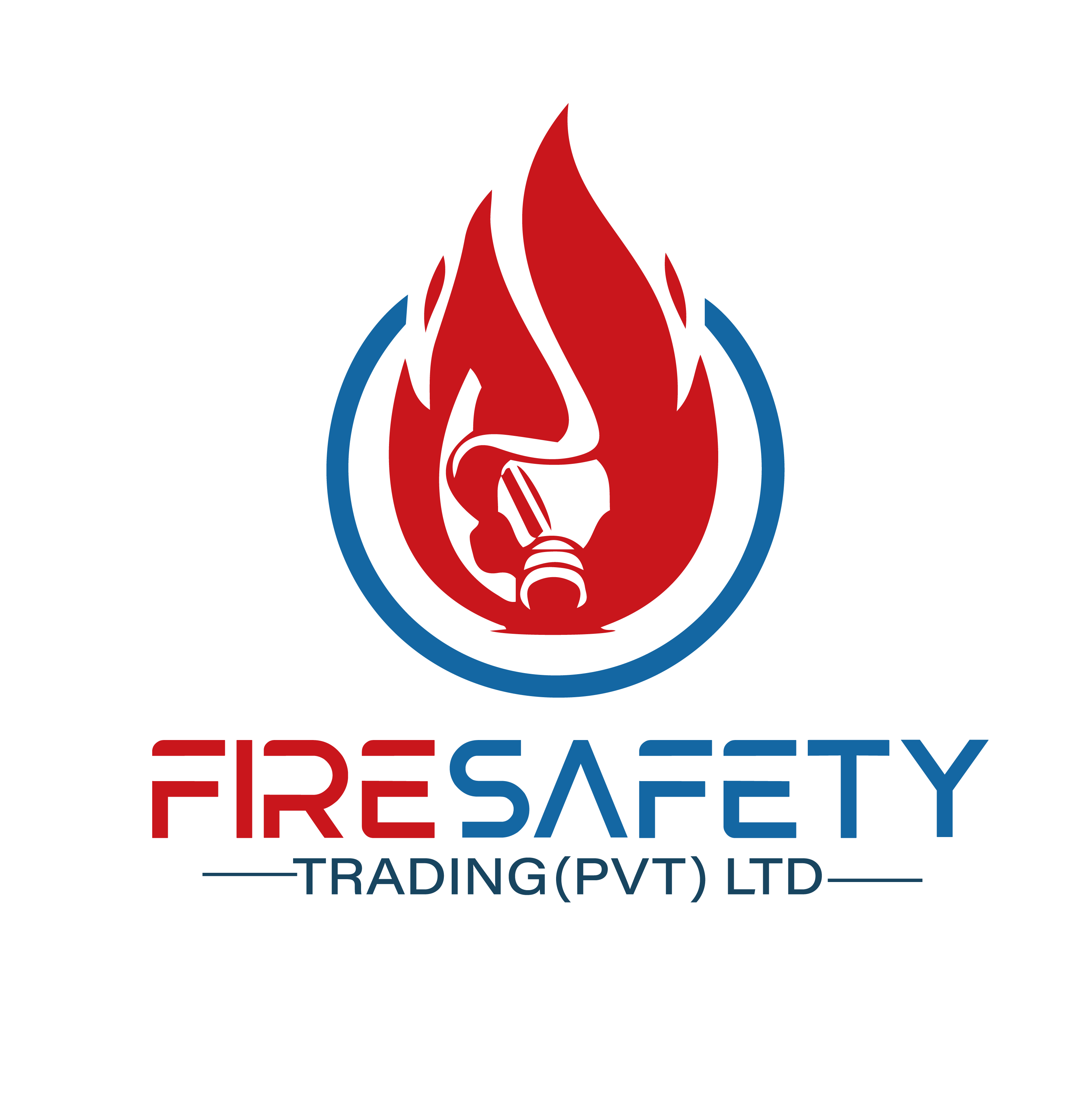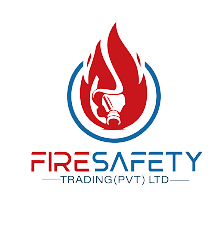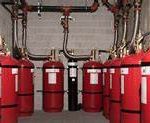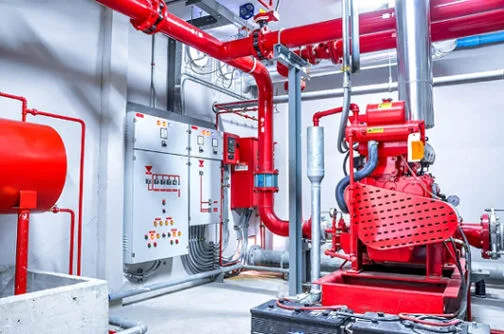Water Based Fire Suppression System:
Water-based Fire Suppression Systems are one among many fire suppression systems like foam-based fire suppression systems, FM 200 fire suppression systems, dry powder-based fire suppression systems, C02 fire suppression systems, and kitchen hood fire suppression systems. The main purpose of fire suppression systems is to suppress the fire.
Devastating damages and losses can happen as a result of a fire outbreak. The damages such as loss of precious human lives, important documents, irrecoverable data, and worthy buildings may occur as a result of a fire incident. It is important to keep such firefighting equipment that can help you in instantly responding to the fire outbreak. Keep the fire suppression systems in your buildings to fight quickly with the fire and suppress it.
Fire Safety Trading Pvt ltd is committed to providing fire safety equipment to their valued customers. We know how worthy human lives, buildings, documents, data, and the environment are, therefore, we provide all the safety equipment at our stores and online as well.
Different types of fire suppression systems are designed. The reason for manufacturing these various types of fire suppression systems is to choose the most suitable product for a particular fire class. The fire is classified into different fire classes depending upon the fuel involved in its burning. There are three components of fire and fuel is one among them. The three elements involved in the fire triangle, are:
1- Oxygen:
Oxygen is a gas that is readily available in the environment and atmosphere all around us. Human beings need it to stay alive as it supports breathing, as well as the oxygen gas supports the fire in burning. If a fire breaks out and oxygen is present over there in a considerate amount, the result will be rapid spread of fire and a huge damage can occur. On the other hand, if the supply of oxygen is not available, the fire will not spread. So, this is how oxygen is a component of the fire triangle that helps in burning.
2- Fuel:
Fuel includes everything that can burn and is involved in the spread of fire. All the things that can catch fire and are combustible can be considered as the fuel in the fire triangle. The examples of fuel are, wood, clothes, plastics, oil, paints, rubber, electrical equipment etc. The fire transfers from one thing to another and gets spread. In this way, fuel plays a primary role in the spread of fire.
3- The Ignition Source:
Although oxygen and fuel are the reasons for fire spread, ignition source is the component that actually causes the fire to start. In the absence of an Ignition source the fire cannot take place. A huge fire can take place if a small spark near the combustible things happens. Hence, we can say that the Ignition source is the first thing that starts a fire.
Fire Classes:
After knowing about the three components of the fire triangle, that combines and causes fire. Now if we talk about the fire classes, fire is classified into the classes based on fuel involved in the burning and spreading of fire. There are the following fire classes:
1- Class A Fire:
Fire in which the combustibles are organic solids like clothes, wood, paper, etc are classified as class A fire. These things are most common in the environment and class A fires can easily occur.
2- Class B Fires:
The fires that involve the burning of flammable liquids are class B fires. These fires are extremely dangerous and spread rapidly if the fuel is present in abundant amounts.
3- Class C Fires:
The fires caused due to flammable gasses are regarded as class C fires.
4- Class D Fires:
The fires in which the burning of the metals is involved fall in the category of class D fire.
5- Class F Fire:
When fats are involved in a fire, the fire is known as a class F fire.
6- Electrical Fires:
The electrical fires are caused by electrical equipment. In these fires the electric equipment may not burn itself but the fire may be started due to an electric spark.
7- Class K Fire:
The fires that take place in the kitchen, especially in commercial kitchens fall in the category of class K fires.
As we have seen there are different classes of fires, and all the classes involve the burning of different materials. So, a single fire extinguisher is not enough to extinguish all fire classes. Therefore, different types of fire suppression systems, for example, CO2 fire suppression systems, FM200 fire suppression systems, Halotron fire suppression systems, Water-type fire suppression systems, and dry chemical fire suppression systems, etc. Each is suitable for the specific fire class.
Color Coding for Fire Suppression Systems:
Since there are different types of fire suppression systems, there must be a way to identify them. Although all the cylinders are colored red there is a label of different colors on each system for identifying it. In this way, it becomes easy to find the right one for you.
If we talk about the FM200 fire suppression system, it is suitable for suppressing the Class B fire.
Water-Based Fire Suppression System:
Water-based fire suppression systems use water as a fire extinguishing agent. Which is readily and abundantly available everywhere. It is the simplest and most commonly used fire suppression system. Although it uses water to suppress the fire based on the way the system throws water onto the fire it is distinguished into different types which are mentioned below:
1- Hydrant and Hose Reel System:
Perhaps hydrant and hose reel systems are the oldest means of suppressing the fire in the buildings. The system is not automatic and is operated manually whenever a fire breaks out. The system comprises hose, reels, and pipes. The municipal supply of a city is used as a source to provide water for these systems.
The fire hydrant systems throw water with great pressure onto the fire. This pressurized water is effectively capable of extinguishing the fire in small intervals of time.
2- Automatic Sprinkler System/Pre-Action Sprinkler System:
Water sprinkler systems are the most convenient fire suppression systems. They are extremely reliable as they can detect the fire automatically, on detecting a fire the system becomes active on its own and starts sprinkling water on the fire to extinguish it. These systems are installed at places where normally people are not present all the time.
If the fire is detected at the early stages and a method to extinguish it becomes active, it greatly helps in reducing the losses and damages. As the fire sprinkler systems get activated automatically they save a lot of time and overcome the fire at the early stages.
3- High Velocity and Medium Velocity Water Spray System:
High velocity system consists of prices of nozzles that throw water in the form of a jet. The water jet is capable of spraying a uniform thickness of water on the fire. As a result, the fire not only extinguishes but also cools and smoothers. The selection of nozzles, water pressure, and orientation of the nozzles are important factors for the efficient functioning of such systems.
The medium velocity systems are used at the places where high velocity systems fail. It sprays fine droplets of water on the fire. Fire detection systems, deluge valve systems, pipes, and nozzles are the components of a medium velocity system.
4- Water Mist System:
As the name indicates, the water mist system sprays water in the form of mist. It throws water at a high pressure but uses less amount of water. Reduced pipe sizes, less labor cost, and minimized cleanup, are the plus features of this system.
5- Foam Water System:
Foam water systems make a blanket on the fire extinguishing agent on the fire hence, cutting off the oxygen supply that ultimately suppresses the fire. The foam is composed of different elements, and when mixed with the water, becomes an excellent fire extinguishing agent. The foam solution is highly efficient in suppressing the fire in just a few seconds.
The different types of water-based fire suppression systems have different applications hence making them suitable for different environments.
Water-Based Fire Suppression System Fire Classes:
Water-based fire suppression systems are mainly essential for suppressing class A and B fires. As it uses water for extinguishing the fire it is not suitable for use at certain places. However different types of water-based fire suppression systems can be used at places where just water cannot be used. For example, the foam-based fire suppression system can be used to suppress fire caught by flammable liquids but only water cannot be thrown on the flammable liquids.
It is important to choose the right fire suppression system to minimize the damages rather than create the worst situations.
Conclusion:
Water-based fire suppression systems are highly efficient in suppressing fire in different environments. They are most suitable for Class A, and B fires, but using them in different designs makes them able to suppress other fire classes. There are different types of water-based fire suppression systems, that makes them diverse to use
Fire Safety Pvt ltd:
Fire Safety Pvt ltd has been working in the fire industry for years. Working hard to provide the best firefighting products. We are searching for products all across the world. After years of hard work, we are now a brand partner of many famous brands. We indulge in importing the best and highest-quality products from those brands and provide them to our valued customers in Pakistan. We never compromise on the quality of products.
Fire suppression systems are the basic tools involved in firefighting so they should be kept in the buildings for suppressing the fire. Therefore, we provide all types of fire suppression systems, including FM-200 fire suppression systems, CO2 fire suppression systems, water-type fire suppression systems, dry chemical fire suppression systems, etc. We provide the best quality fire suppression systems, available in various quantities and sizes.
Our expert team, who is technical and professional in performing all the related tasks. You can, not only purchase the fire suppression system from us, but we also provide the services of installation, maintenance, and regular inspection of fire suppression systems. Our team has the required tools for completing their duties effectively in a short time and without damaging anything.
So, if you are looking for a water-based fire suppression system at a reasonable price in Pakistan, you can contact us. We are available online and in-store.





